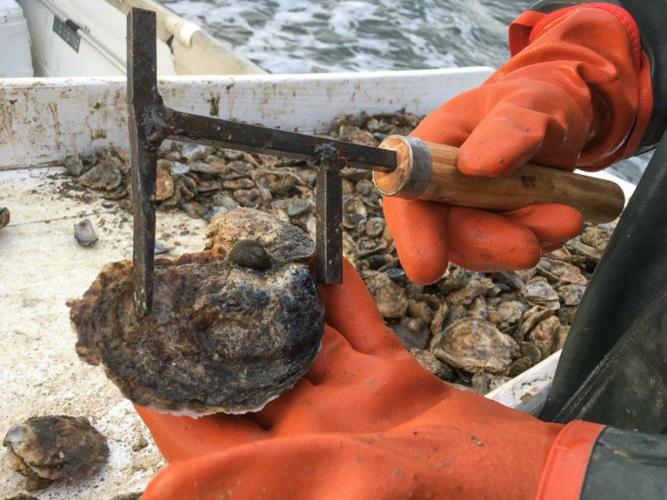Maryland’s oyster population remains in pretty good shape, according to the state Department of Natural Resources. Preliminary results from DNR’s annual reef survey in fall 2024 found that the state’s stock of Chesapeake Bay bivalves experienced above-average reproduction last summer, and the diseases that once devastated them remain at relatively low levels.
The state’s oysters had a banner spawn in 2023 with baby oysters or “spat” seen in great abundance throughout the Bay, even in areas that haven’t had any reproduction in a generation or two. The 2024 “spatfall intensity index,” which measures the density of tiny oysters, declined but remained above the 39-year median for the fifth straight year.
DNR sampled almost 300 oyster bars from Oct. 8 through Nov. 25, taking note of oyster abundance and health, including reproduction, disease intensity, and mortality.

The bumper crop of juvenile oysters in 2023 resulted from persistent dry weather elevating salinities that year. That also helps spread and intensify MSX and Dermo, the two diseases that ravaged oysters Baywide from the mid-1980s through the early 2000s.
Overall, the 2024 oyster biomass—a combination of size and number of bivalves—was 62% above the long-term average and the third highest annual figure since DNR began tracking it.
Oyster survival in fall 2024 was good, the survey found, even in places like the upper Potomac River, where high freshwater flows in winter and spring had lowered salinities to levels stressful for oysters. Freshwater stunts the growth of young oysters, but the lower salinity also reduces disease levels overall.
Disease and mortality are relatively low now, but they could rebound if the winter’s dry weather continues into the spring, officials say.
“We really need to see some rainfall,” Chris Judy, DNR’s shellfish division director, told the department’s Oyster Advisory Commission on March 17.
Editor’s Note: Virginia’s study will be released later in the spring, according to Virginia Institute of Marine Sciences (VIMS) spokesman John Wallace. Results from Virginia’s 2024 shellstring (recruitment) and dredge surveys are available in the following report: The Status of Virginia’s Public Oyster Resource 2024.
This story was first published at bayjournal.com on March 31, 2025.



